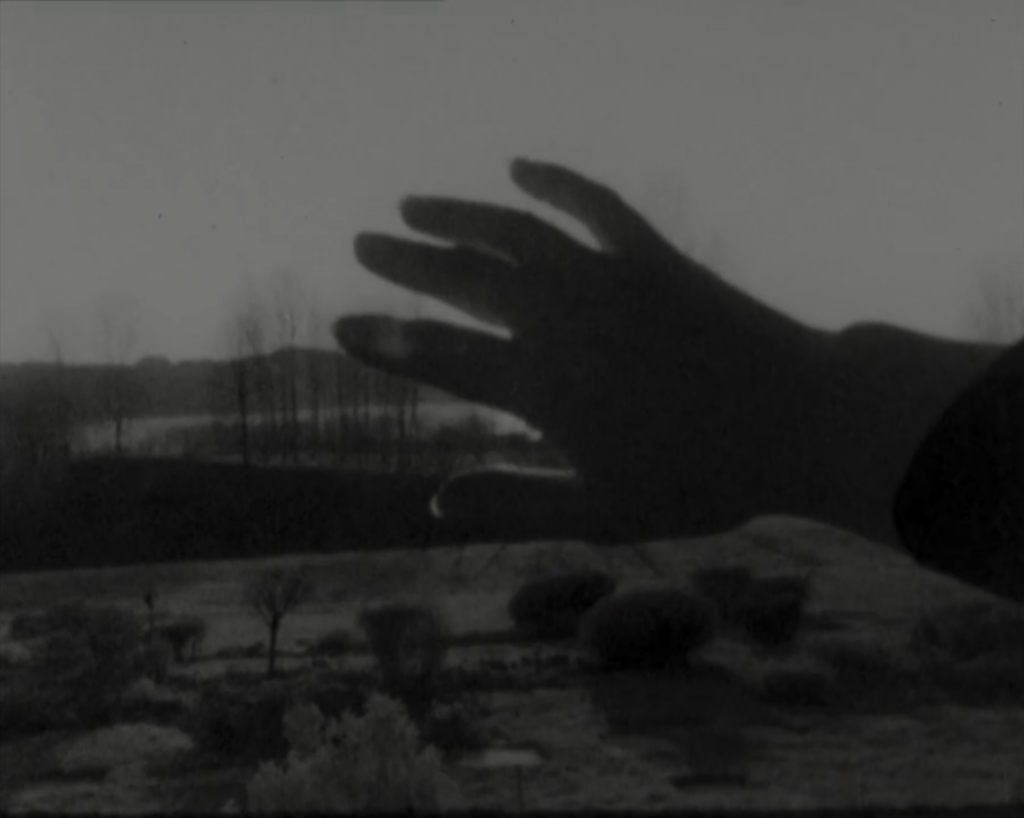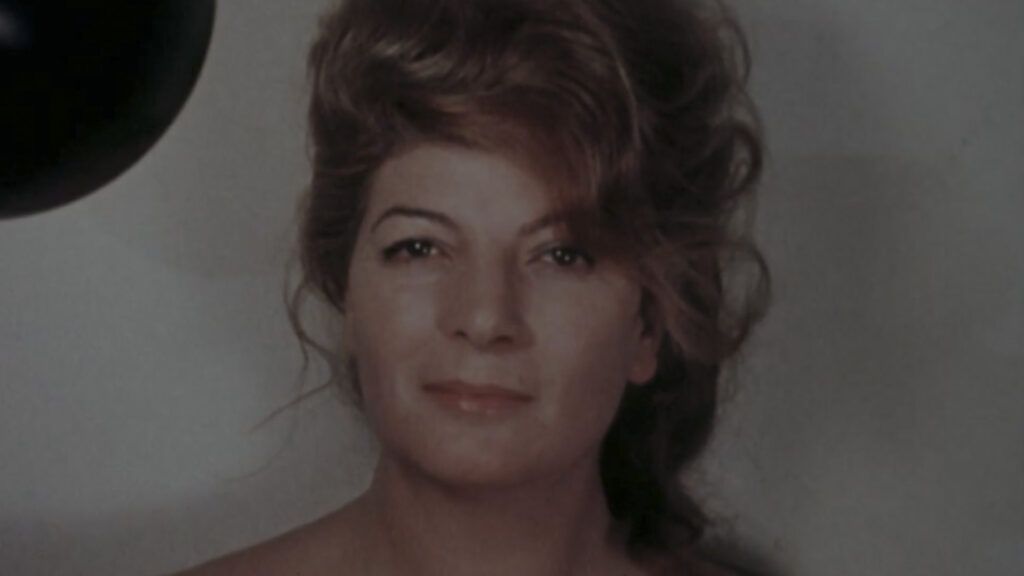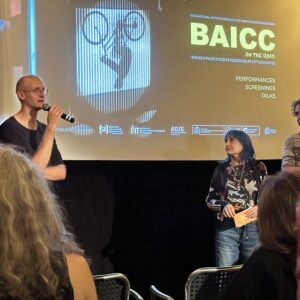THE DORMANT BODY. TWO TEXTS ON MARINELLA PIRELLI
To celebrate the special program Il corpo latente, a selection of Italian experimental pieces curated by Giulia Mazzone and Giuseppe Spina from Nomadica, we share with you two texts by Erik Bullot that look into the cinema of Marinella Pirelli (one of the featured authors –we invite you to watch two of her films), and which were originally published as part of the catalogue of the exhibition Luce. Movimento. Il cinema sperimentale di Marinella Pirelli, curated by Lucia Aspesi and Iolanda Ratti at Museo del Novecento in Milan in 2019.

Appropriation / Appropriating one’s own actions – Sole in mano
A dark screen. The hand of the artist, covering the lens like a mask, rises slowly, revealing an undulating landscape in black and white. In front of the camera, the brightness of the sun overexposes the film. With dexterous movements, the hand plays with the sun, rolling the bright sphere along her fingers. The brightness fades, the index and thumb try to grab hold of the celestial disk just as if it were a marble. The brightness increases and decreases –the hand acts like a tactile diaphragm. Sounds of violent wind; the image turns to negative. The hand, now grey and white, lets through unexpected flashes of light that blurry the image, darkening it. The alternate movements of the fingers before the sun seem to evoke a corporeal shutter. As the wind blows violently again, the hand touches the lens to put an end to the film, creating a round shape –a final white image, as a negative side to the film’s first frame.
Several elements are at play in this minimalistic film. On the one hand, it is possible to identify a playful reference to the optical and chemical processes behind the film: the sun, at the center of the frame, mirrors the round shape of the lens; the transition from positive to negative; the inversion of the gray gradients –resources that connect with Paolo Gioli’s thoughts on the oneiric nature of the negative image. Let’s now focus, for a moment, on the triple title of the piece: it refers to appropriating the sun, but also the technical resources of cinema by the means of a simple play with light, which is also at the core of the author’s light installations (the body of the viewer is made part of the exhibition space). This appropriation [appropriazione] is also “propria azione”, that is, “a proper action/inherent action”: it is appropriate, pertinent; it also traces back to the very essence of cinema (optics, light, diaphragm, shutter), but also to the vocabulary of performance, exploring the relationship between the optic and the haptic. At the same time, it is “one’s own action”, an action by the filmmaker herself, who intervenes in her film as she had already done in Narciso, and, soon after, in Doppio autoritratto, where she literally steals the sun. Sole in mano is probably the most experimental film by Marinella Pirelli –one in which she uses different media to evoke cinema, which, freed from the restrictions of its very tools, enters the realm of performance.
Doppio autoritratto
Marinella made this film in 1974, soon after her husband Giovanni Pirelli passed away. Doppio autoritratto is the last film by the Italian artist –sober and poignant, it seems to have been an attempt to exorcize the tragic incident; maybe a first step into a period of mourning. An initial declaration, dated in 1974, offers an explanation of the procedure. Playing a double role (she is the main actress, but also the camera operator), the artist films herself, registering moving sequences, without supervising the filming: “The camera was my only companion. Now, you will be my companions, too.” Doppio autoritratto alternates frontal self-portraits made at a studio (very solemn, with the artist looking into the camera) and handheld takes in which, despite the imprecisions in the framing and focus, we catch glimpses of the author’s nape, seeing bits of her neck, her hair, the texture of her skin, the tips of her fingers hovering over the lens. The image conveys a unique feeling, cold and sensual at the same time. The film closes with a series of still portraits of stunning, almost dizzying neutrality. A constant soundtrack accompanies the frontal portraits: Vivaldi’s Juditha triumphans and Monteverdi’s Lamento di Arianna. While Judith triumphs after decapitating general Holofernes; Lamento di Arianna is the desperate chant of a woman in love who, after being abandoned, only hopes to be liberated by death.
This film is an indirect reaction to Narciso. It’s not about the artist filming her own body –not anymore. Here, an unsupervised camera vicariously executes the spectacular action, “following” the artist around. It’s hard not to think about the circumstances that favored the emergence of video art and which Rosalind Krauss analyzes –focusing on their psychological aspects– in her founding text The Aesthetics of Narcissism, published in 1976. The final words of Marinella’s film, which she addresses to concept artist Vincenzo Agnetti, cast light on the philosophical dimension of the piece. On several occasions, the film shows –half hidden in the dark– Quando mi vidi non c’ero, a book by Vincenzo Agnetti published in 1971. The words of the title are shown in white capital letters: QUANDO MI VIDI NON C’ERO. This relationship between perception and identity resonates with George Berkeley’s words Esse est percipi aut percipere (“To be is to be perceived or to perceive”). This quote is the starting point for Samuel Beckett’s Film, made in collaboration with Alan Schneider in 1965. In this piece, the main character, played by Buster Keaton, escapes all presence before encountering his own gaze… which leads him to cover his eyes with his hands. One cannot escape their own gaze. “Search of non-being in flight from extraneous perception breaking down in inescapability of self-perception”, Beckett wrote in his introduction for the film. Doppio autoritratto, however, closes with one last image of the author in front of the camera –her eyes are closed. Was she trying to disappear before her own eyes, to interrupt all potential contact? In this light, the ending of the film stands out as an allegory of the silence of the years to come. Marinella Pirelli’s cinema thus seems to lie at the paradoxical, ardent intersection between the two alternatives: to be perceived or to perceive.






